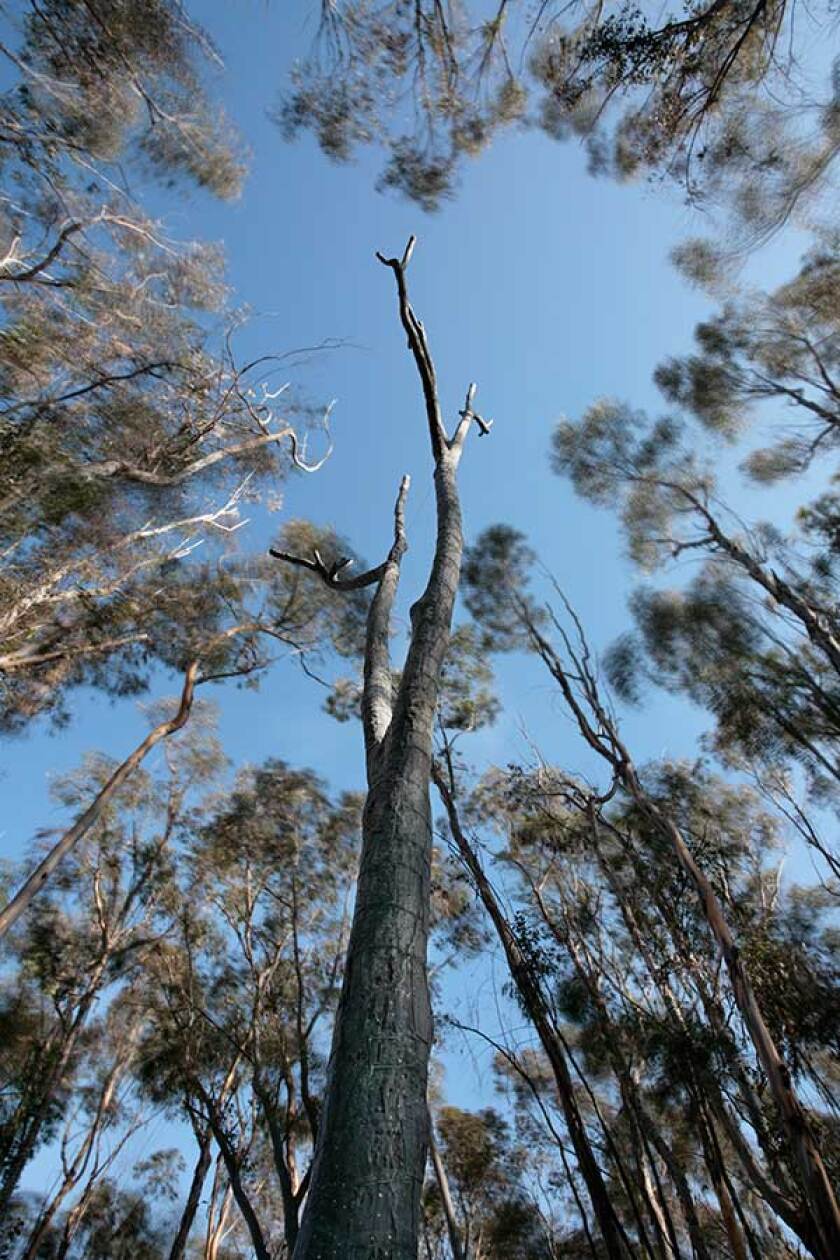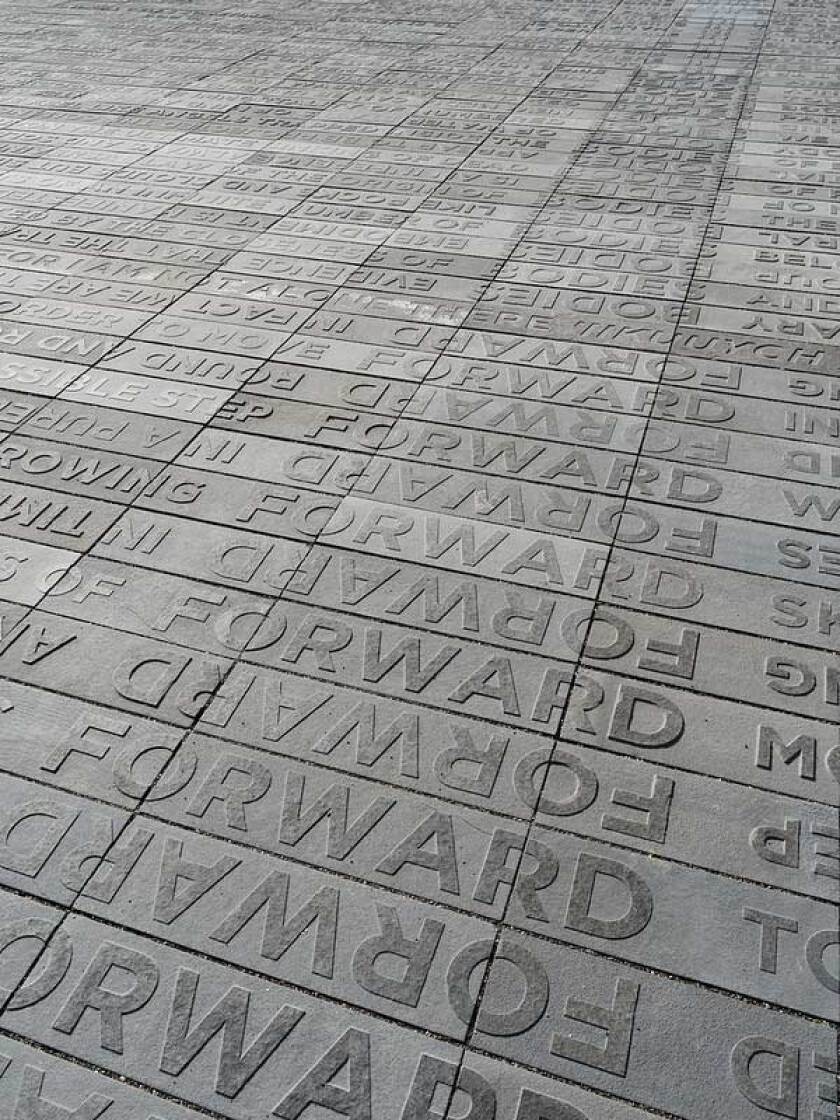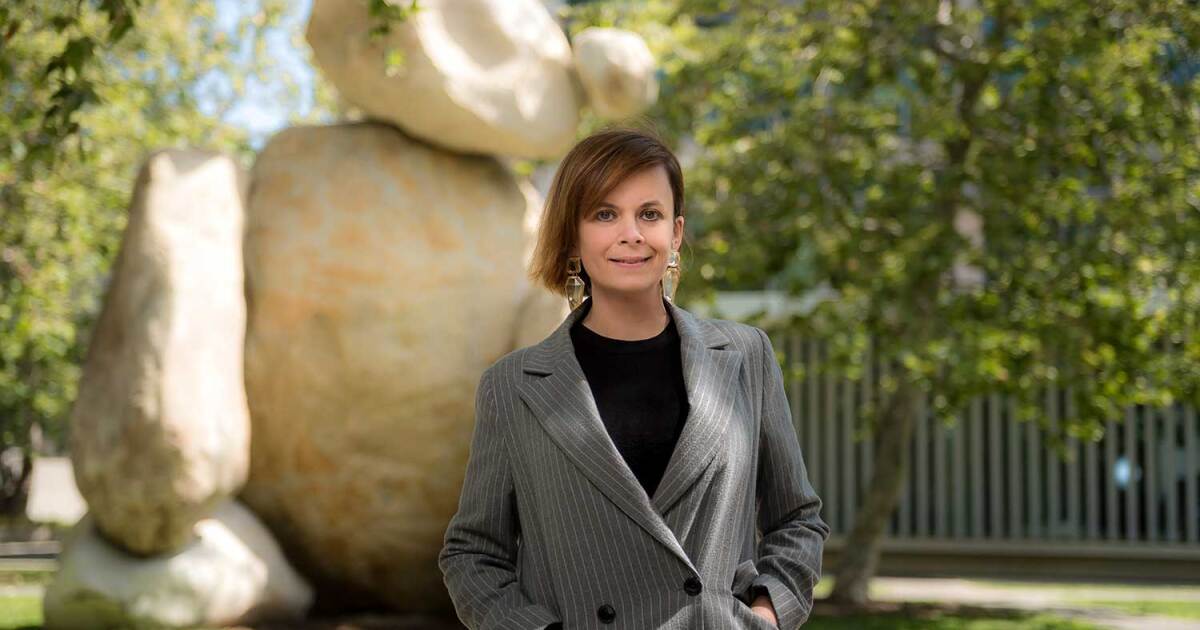As you wander around the UC San Diego campus in La Jolla, you might come across more than 20 works of art infused into the landscape. These works, commissioned as part of the renowned Stuart Collection, have a new head – curator, writer and artistic project manager Jessica Berlanga Taylor.
As Director of the Stuart Collection, she is responsible for the works from conception to conservation.
Berlanga Taylor, a bicultural and bilingual art professional, has curated several exhibitions and commissioned over 40 works of art, 11 of which have been created for public spaces in Mexico City. She has led the design and implementation of educational projects, seminars and workshops for a wide range of audiences, including students and emerging artists. She has also edited, co-authored and published three books and numerous articles and essays, including a comprehensive survey of 20 years of contemporary art in Mexico.
The former director of the Stuart collection, Mary Livingstone Beebe, retired at the end of last year after 40 years. Berlanga Taylor was appointed following an executive search process.
Newsletter
Get the La Jolla Light weekly delivered to your inbox
News, reports and sports on La Jolla, every Thursday for free
You may occasionally receive promotional content from La Jolla Light.
Now over two months in her role with the Stuart Collection, Berlanga Taylor says she is energized by the opportunity to engage new artists, spark conversations on important topics and expand the collection in the community.
She spoke of her early plans to promote education and strengthen UCSD’s position as an arts destination, and her early exposure to museum appeal.
Artist Alexis Smith’s Stuart Collection artwork “Snake Path” is a 560-foot-long, 10-foot-wide winding path in the shape of a snake.
(Philipp Scholz-Rittermann)
Q. What attracted you to the role of director and to the transformation of the campus into an artistic destination?
A. I was interested in the role of Director of the Stuart Collection for the opportunity to nurture a legacy while seizing opportunities for growth. It is unique to have an open-air museum that both reflects and elevates the excellence of a campus’ intellectual and cultural life by commissioning the art of its time. This corresponds to one of my main objectives: to help realize the vision of [UCSD] Chancellor [Pradeep] Khosla to transform UC San Diego into an arts destination. This will allow us to create deeper links with local, national and international organizations. For me, the crucial aspect of public space is where democracy is created, debated and contested. We create the dialogues we need to be able to deal with the complexity of the times in which we live.
Q. Beyond curating more works of art for the collection, how would you like to involve communities in learning about the works?
A. Outside of curatorial work, I enjoy creating public programs to pursue education in a different way. The first step in achieving this is to understand the use that the public attributes to a work of art and how they engage with it. I would like to have more space for debate and expression, expanding the conversation about the themes of the artwork and how these might be relevant to what the students are studying or researching. From there, I would like to supplement the artistic education already taking place on campus, such as at the MFA [master of fine arts] and visual arts programs. Additionally, it would be great to infuse storytelling and performing arts to expand the presence of the artwork both on and off campus. The ultimate goal is to inspire a sense of wonder and connection by providing a range of artistic experiences for people across the university.

Terry Allen’s Stuart Collection “Trees” include three trees: a Musical Tree, a Literary Tree, and a Silent Tree.
(Philipp Scholz-Rittermann)
Q. The collection contains a range of voices, media and meanings. How do you intend to continue to develop its diversity of artists?
A. I see the immediate future of the Stuart Collection as strengthening and expanding its engagement with the communities we serve by positioning diversity at the center of our work. This may involve diversifying the portfolio of artists we invite for commissions, the issues and themes we address, the sites where the sculptures are placed, and the communities we collaborate with on and off campus. We can create very rich conversations right from the start, starting with a partnership with the [UCSD] Office for Equity, Diversity and Inclusion to amplify efforts already made by the university. I would like to explore how we can create meaningful experiences through art for audiences from all kinds of life experiences. It’s exciting to see how art can forge deep connections between people and build community resilience.
Q. What do you enjoy most about conservation?
A. Curating is about creating links. I like to get involved with artists from the start. Although I am not an artist myself, I like to participate in the co-creation of commissioned works of art. I will help the artist come up with concepts, make decisions and start developing the work. And doing that at UC San Diego is very exciting because there’s a fantastic ecosystem of intellectual work going on here. Given the philosophy of experimentation and innovation, we can push the boundaries of what we order and how we interact with people.

The newest piece in the Stuart collection, “Concordance,” was created this year by artist Ann Hamilton.
(Philipp Scholz-Rittermann)
Q. The entire 1,200 acre campus is available for commissions. What makes this a unique opportunity?
A. I love site specificity because it’s about understanding people and places, creating a sense of place and revealing the significance of a particular place. For the past 15 years I have worked on commissions for public spaces, generating creative ideas on how to engage with different audiences in Mexico City, collaborating with artists from different parts of the world. It is important to help the artist understand the context of their work, as well as to challenge them to go further. Maybe they always wanted to experiment with a certain material or tackle a particular problem. Being able to come up with new ideas and immerse yourself in the context of a site is exciting.
Q. When did you realize you wanted to pursue a career in the arts?
A. I have always been surrounded by art. My father is a photographer and his studio and laboratories were with us. He worked with many dancers, painters and sculptors, so the space was always buzzing with artists coming and going. I was also immersed in a bicultural lifestyle – my father is Mexican and my mother is British. They both intentionally exposed my brother and me to the amazing intellectual and artistic history of Mexico, Latin America and Europe. I also remember an awakening that happened when I was 13 and my mother took me to the National Gallery in London. I still remember the breathtaking moment of entering the Paul Cézanne exhibition. I suddenly realized the brilliance behind the art.
Berlanga Taylor can be reached at jberlangataylor@ucsd.edu or (858) 534-2117.
— La Jolla Light staff contributed to this report. ◆

